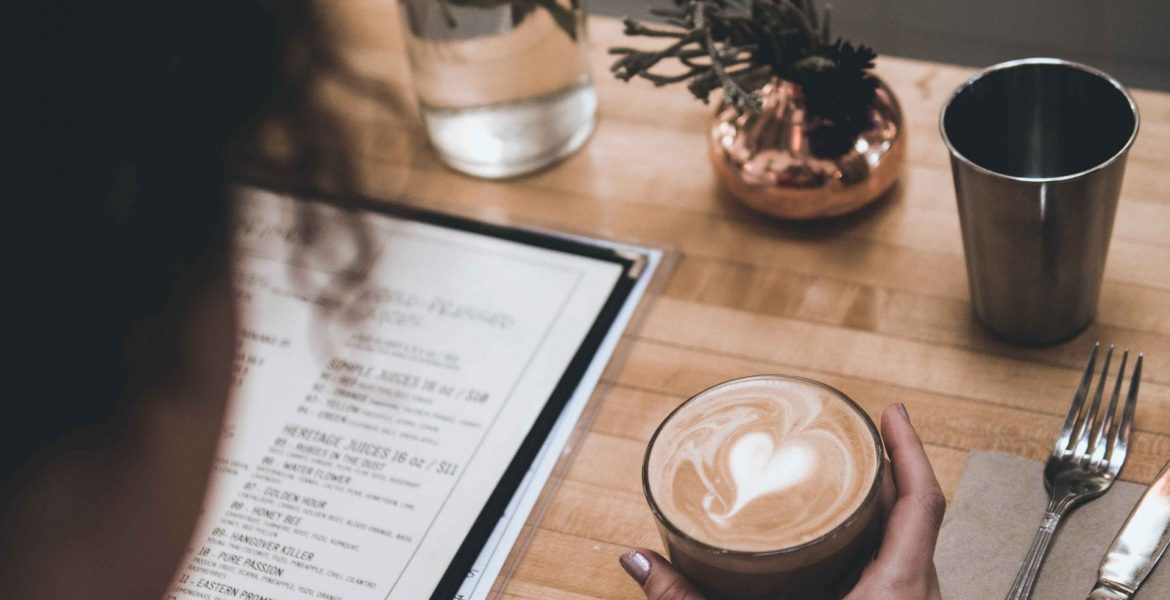
We can’t emphasize this enough: menus are the most crucial marketing material of any restaurant.
It’s the first thing that customers look for and the last thing they consult before ordering. When you reflect on it, the design of your restaurant menu stands between profit and loss. If you highlight the least popular items on a takeaway menu, sales can easily improve.
But why do many cafes and restaurants still put little effort into their menu design? We believe one of the reasons is they have no idea where to begin.
So we’ve put together 5 tips to help you design the perfect menu.
1. Use your logo and branding as a guide
Your menu should reflect your restaurant’s personality. Choose colours, fonts and any graphics that are appropriate for your restaurant’s theme. So this means your menu should match your logo, signage or fittings.
You can see in these two menus designs below, how they communicate a different feel to customers.
This menu above conveys a more ‘high end’ vibe, that the meals are decadent and made from quality ingredients. One could also assume that this food is being sold at a higher price point.
This burger menu uses bright colours and large titles to communicate a fun and nostalgic feel. From these visual elements, one could assume that there’ll be larger portions of food, cheaper prices and a more casual dining setting.
2. Categorise your Menu Items
A confusing menu is enough to turn off your customers appetite – they must be able to find what they’re looking for at first glance. This is where categorising your menu helps. You can split your menu into categories based on the type of food (Pastas, Vegetarian), time of day (Breakfast, Lunch) or course (Entrees, Desserts).
Whether you’re running a pub or a family-style café, it’s crucial to make the selection process as easy as possible for your customers.
After organising your items, it’s time to analyse your customers’ reading patterns. Research shows that people tend to look at a menu’s upper right-hand corner first. For this reason, many restaurants put their most expensive or least popular offerings in this sweet location.
3. Don’t use too many photos
Should I add photos to my menu? While good food photography can be appealing and enticing, this is commonly seen being used by fast food restaurants, such as McDonalds and Subway. If you own a café or restaurant it may be best to avoid photos altogether and leave the quality of the food to your customer’s imagination.
If you would like to include food photos on your menu we recommend using a quality camera or investing in some professional photography. When taking your photos you should also ensure your meals/plates aren’t over-styled – the photos should show your food as it is, you don’t want your customers to have a visual expectation and then be disappointed with the meal they receive.
This is also why we recommend NEVER using stock photos.
4. Use appealing descriptions
Diners base their decisions on an item’s description. That’s why you should strive to find the most evocative words that can tingle their tastebuds. Studies reveal that diners tend to feel more satisfied with a meal that has an extra description and restaurants that used this strategy had grown sales by 27%.
So instead of saying “Traditional Greek Gyro”, try “Luscious Greek Gyro.” Other appealing descriptors include sensory descriptors like “succulent” and “tender” and geographic terms like “Italian” and “Cajun”. You can also capitalise on nostalgic terms, such as “Grandma’s” and “homestyle.”
Showing craftmanship in the copywriting style also reap the rewards. For example, “Farm-fresh chicken drizzled in olive oil and baked to golden perfection and covered in freshly harvested garden vegetables.”
5. Choose an appropriate paper stock to print your menu on
When organising for your menus to be printed, you should take the paper stock into consideration. The texture and thickness of the paper you choose can either compliment your design or effect your Business’ reputation.
For example, higher end restaurants will typically use a thick and textured stock to communicate quality and in turn, more expensive dishes.
Whereas takeaway shops will typically have thinner and glossier menus which represent cheaper and ‘value for money’ meals.
Quality Menu Design and Printing in Newcastle
A menu can make or break your overall appeal to diners. Don’t gamble on this, get in touch with Printnova today to chat with one of our qualified graphic designers.
Our team are also experienced with designing and printing a variety of advertising materials for the hospitality industry, including loyalty cards and drink coasters.
Article written by Natalie James
Feature photo by Avi Richards
